What is Botulinum toxin?
Botulinum toxin A is a very successful medical treatment for facial lines and wrinkles. It is delivered by injection directly into the facial musclesA topical form of botulinum toxin A is under investigation.
How does it work?
BOTOX®, a registered trade mark of Allergan Inc., and Dysport®(Ipsen's product) are different forms of purified botulinum toxin A (onabotulinumtoxinA), and are produced by the bacterium Clostridium botulinum, the cause of a dangerous disease called botulism. Botulinum toxin is a neuromuscular blocking agent, which means it causes paralysis of the injected muscle by preventing the release of acetylcholine from motor nerve terminals. Without its nerve supply, the muscle fibre withers away. The muscle strengthens again as the nerves regenerate.Botulinum toxin reduces sweating by blocking the sympathetic nerve fibres that control sweat glands.
What can botulinum toxin be used for?
Botulinum toxin treatment was originally introduced to treat muscle spasms, including blepharospasm (spasms of the eyelids), strabismus (squint), cervical dystonia (torticollis of the neck) and spasticity due to cerebral palsy or other muscular diseases.In patients treated for facial spasms it was noted that facial wrinkling decreased over the treated muscle. This experience lead to the development of botulinum toxin for the treatment of dynamic facial wrinkles.
People often dislike their central scowl lines (called glabellar lines), which are caused by the corrugator and procerus muscles contracting when concentrating, squinting, or frowning. Botulinum toxin injections into these muscles weaken them and successfully reduce the prominence of the line.
Botulinum toxin can also be used to lessen crows' feet, bunny lines, marionette lines and smoker's lines. The treatment can be combined with implantations such as collagen or hyaluronic acid to further improve the appearance. It can also be used to shape the eyebrows into an arch or flare and to correct facial asymmetry.
Botulinum toxin is very successful at reducing excessive localised sweating (hyperhidrosis), especially in the armpits. Multiple superficial injections are given in a grid-like pattern over the affected area. It may also prove helpful to reduce flares in those with pompholyx (a form of hand dermatitis) or Hailey-Hailey disease, when these are provoked by sweating.
It has also been successfully used to control anal fissuring, postherpetic neuralgia (shingles pain) and some forms of headache
How is botulinum toxin administered?
Tiny quantities of the toxin are injected directly into the affected muscles. It takes three to five small injections between the eyebrows to treat the frown line. The injection is almost painless. The treated muscles weaken over the following week or so. Most people do not notice anything. They simply become aware that they are no longer able to contract the frown muscles. They can still lift their eyebrows normally and blink without problemsYou can frown as often as you like in the first day or so, but the treated areas should not be touched. Don't have a facial massage!
To reduce sweating, tiny injections are placed in the affected area at about 1cm intervals; this can be quite painful especially if the hands are injected, so local anaesthetic may be required.
The effect of botulinum toxin starts wearing off within a few weeks but retreatment is not usually needed for three to six months. It can be repeated as required. Many people find after three or four treatments to glabellar lines that they don't need another one for a long time; the muscle has markedly weakened or they have broken the bad habit that led to the frowning or squinting originally.
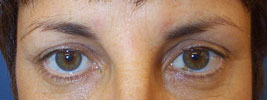
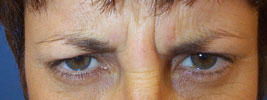
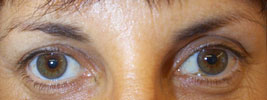
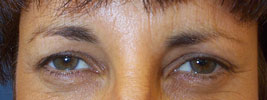
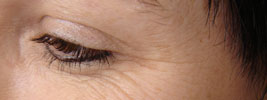
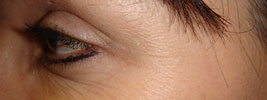
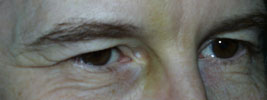
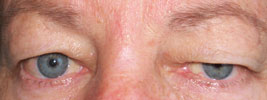

Side effects and risks
Some people have a slight headache after treatment for several hours; it is safe to take paracetamol to relieve this. Very long lasting headaches have rarely been reported. A bruise at the site of injection is possible.
Injection into the palms can cause muscle weakness and result in temporary clumsiness.
The most common significant complication, which is rare, is "ptosis". This is a drooping of the eyelid caused by the botulinum toxin tracking into the eyelid muscle. It generally lasts just a few days, but more prolonged weakness is possible. Let your doctor know if this bothers you; iopidine or aproclonidine eye drops can be prescribed to lessen this effect.
Contraindications
Botulinum toxin injections should not be used in pregnancy or when breast feeding. It is also inadvisable for those with certain neurological conditions such as motor neurone disease or myasthenia gravis.
Caution is necessary for patients on the following medications:
Aminoglycoside antibiotics (may increase effect of botulinum toxin).
Chloroquine and hydroxychloroquine (may reduce effect).
Blood thining agents eg. warfarin or aspirin (may result in bruising).
Occasionally the injection fails to result in the desired muscle weakness. The treatment can be repeated, but to reduce the chance of the development of neutralising antibodies, it is recommended that the treatment is not given again for two months.
